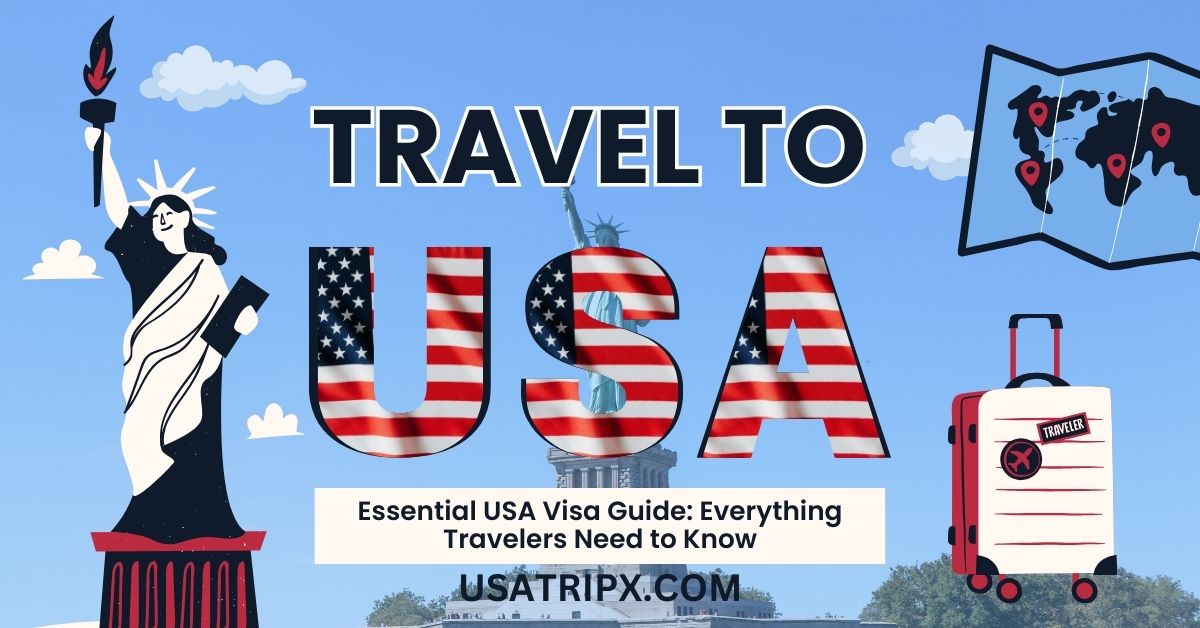Introduction
Planning a trip to the United States? Understanding the visa process is crucial for a hassle-free journey. The USA offers various visa types depending on the purpose of travel, such as tourism, business, study, or work. This guide will walk you through the essential steps to obtain a U.S. visa, ensuring you have all the necessary information for a successful application.
Types of USA Visas for Travelers
The U.S. visa system is divided into two major categories:
1. Non-Immigrant Visas (Temporary Stay)
These are for travelers visiting the U.S. for tourism, business, study, medical treatment, or temporary work. The most common types include:
- B1 Visa (Business Visa): For those attending business meetings, conferences, or negotiations.
- B2 Visa (Tourist Visa): For vacation, sightseeing, medical treatment, or visiting friends and family.
- F1 Visa (Student Visa): For international students attending a U.S. educational institution.
- J1 Visa (Exchange Visitor Visa): For cultural exchange programs, internships, and research scholars.
- H1B Visa (Work Visa): For skilled professionals with specialized expertise in certain fields.
2. Immigrant Visas (Permanent Stay)
These visas are for individuals who intend to live and work permanently in the U.S., including Green Card applicants and family-sponsored immigrants.
Who Needs a U.S. Visa?
Visa Waiver Program (VWP) & ESTA
Travelers from 40 countries, including the UK, Germany, and Japan, may qualify for the Visa Waiver Program (VWP). Under this program, visitors can stay in the U.S. for up to 90 days without a visa but must apply for an Electronic System for Travel Authorization (ESTA) before arrival.
Countries That Require a Visa
If your country is not part of the VWP, you will need a valid U.S. visa before traveling. This applies to citizens from India, China, Russia, and many other nations.
Steps to Apply for a USA Visa
Step 1: Determine the Right Visa Type
Before applying, choose the visa category that suits your purpose of travel. Visit the official U.S. Department of State website to review available visa types.
Step 2: Complete the DS-160 Application Form
- The DS-160 form is an online application required for all non-immigrant visas.
- Fill in personal details, travel plans, and background information.
- After submission, you will receive a confirmation page with a barcode, which you must save for your visa interview.
Step 3: Pay the Visa Application Fee
- The B1/B2 tourist visa fee is typically $185 (subject to change).
- Payment methods vary by country, including online payments, bank transfers, or cash deposits.
Step 4: Schedule a Visa Interview
- Book an appointment at the nearest U.S. Embassy or Consulate.
- The wait time for an interview varies based on location and season.
Step 5: Gather Required Documents
Prepare the following documents before your visa interview:
- Valid passport (must be valid for at least six months beyond your intended stay).
- DS-160 confirmation page.
- Visa appointment confirmation.
- Visa fee receipt.
- Passport-sized photos (as per U.S. visa requirements).
- Travel itinerary (if applicable).
- Financial proof (bank statements, income tax returns, employer letters, etc.).
- Additional documents depending on the visa type (e.g., invitation letter, employer letters, etc.).
Step 6: Attend the Visa Interview
- Arrive on time at the U.S. Embassy or Consulate.
- Answer questions honestly and confidently.
- Provide additional documents if requested.
- After the interview, the officer will inform you of your visa status.
Step 7: Visa Processing & Approval
- If approved, the visa will be stamped on your passport.
- Processing time varies from a few days to several weeks.
- If denied, you will be informed of the reason and whether you can reapply.
Tips for a Successful Visa Application
- Apply early – Visa processing times can be long, so apply at least 3-6 months before your trip.
- Provide accurate information – Inconsistencies in your application may lead to denial.
- Be prepared for the interview – Answer questions clearly and confidently.
- Show strong ties to your home country – Proof of employment, family, or property ownership can demonstrate your intent to return home.
- Have sufficient financial proof – Show that you can support yourself during your U.S. trip.
Visa Denial: What to Do Next?
If your visa application is rejected, you can:
- Understand the reason – The consular officer will explain why your application was denied.
- Reapply if eligible – Correct any mistakes and provide additional documentation if necessary.
- Consult a visa expert – If unsure, seek professional guidance for your reapplication.
Conclusion
Obtaining a U.S. visa requires careful planning and preparation. By following this guide, you can navigate the visa application process smoothly and increase your chances of approval. Whether you’re visiting for tourism, business, or study, understanding visa requirements will help make your travel experience seamless and stress-free.
Safe travels and enjoy your journey to the USA!
